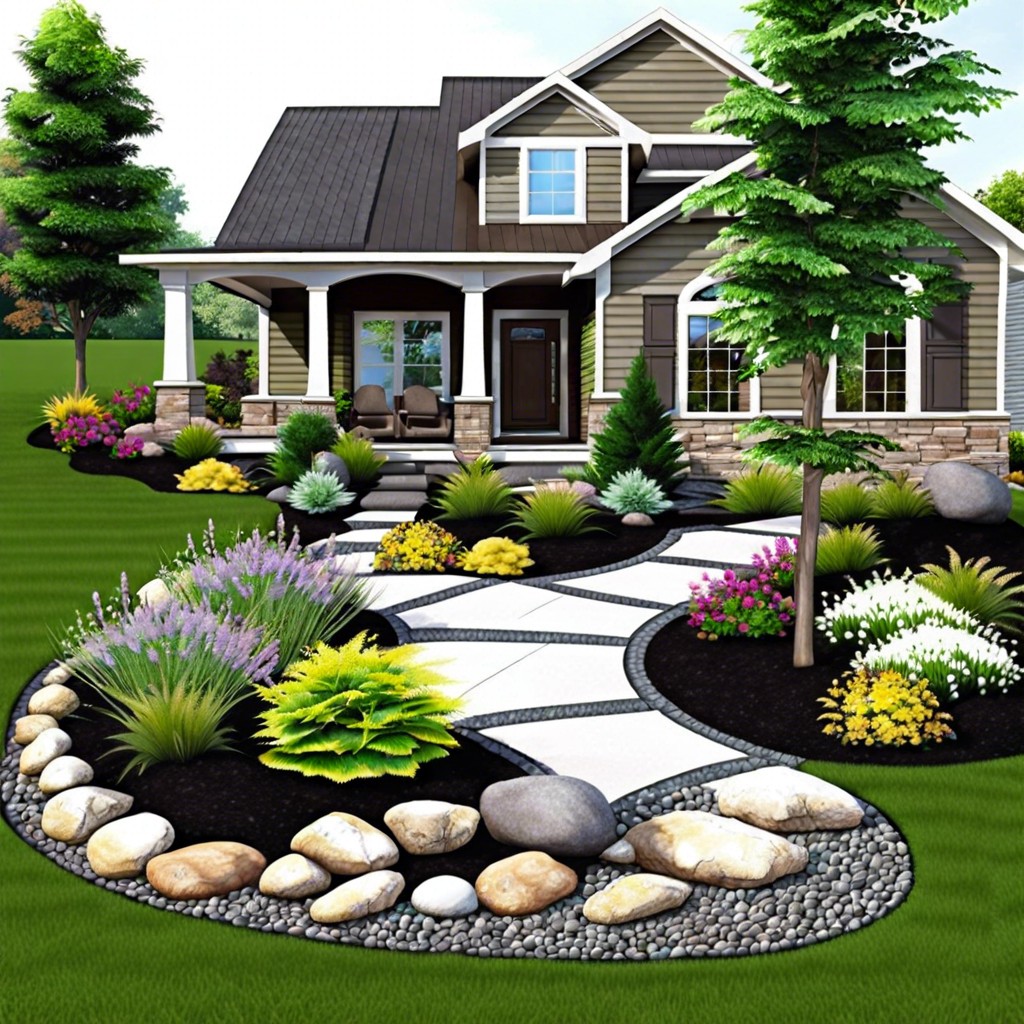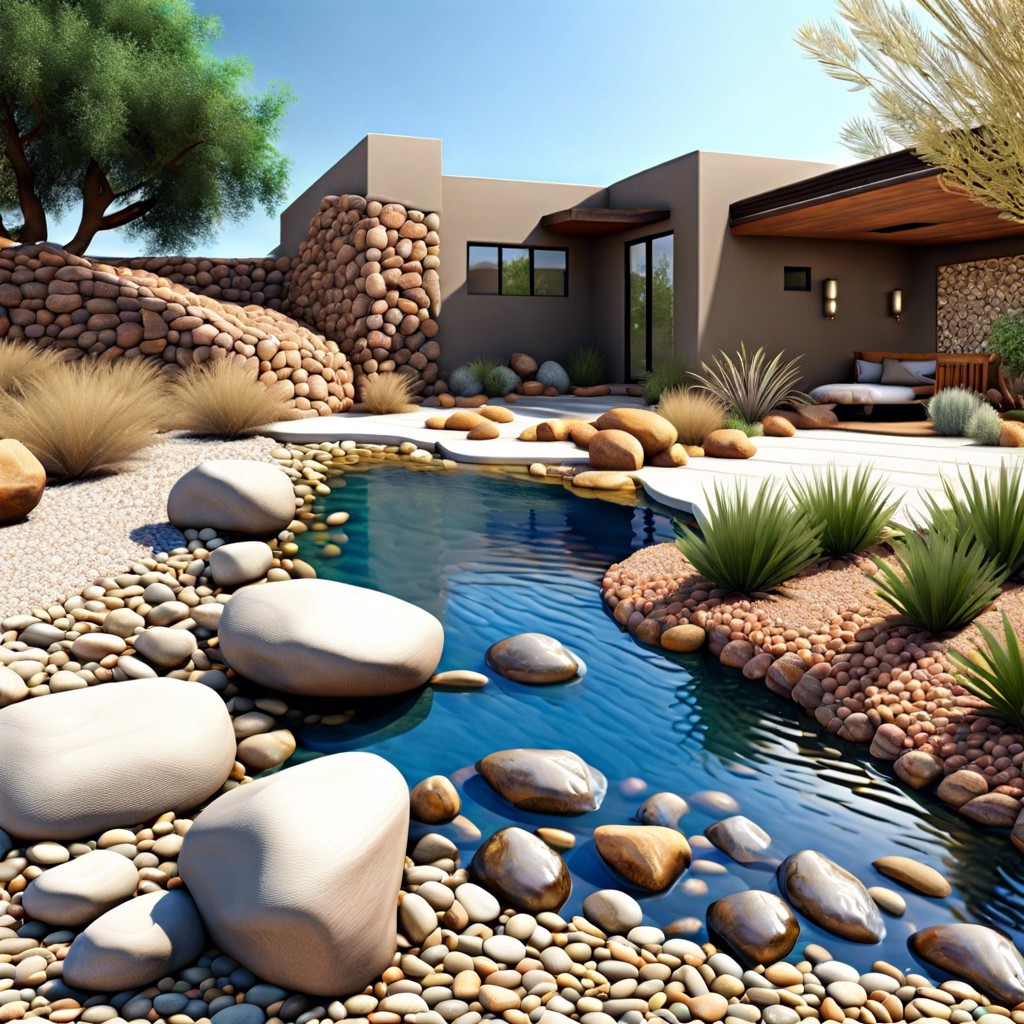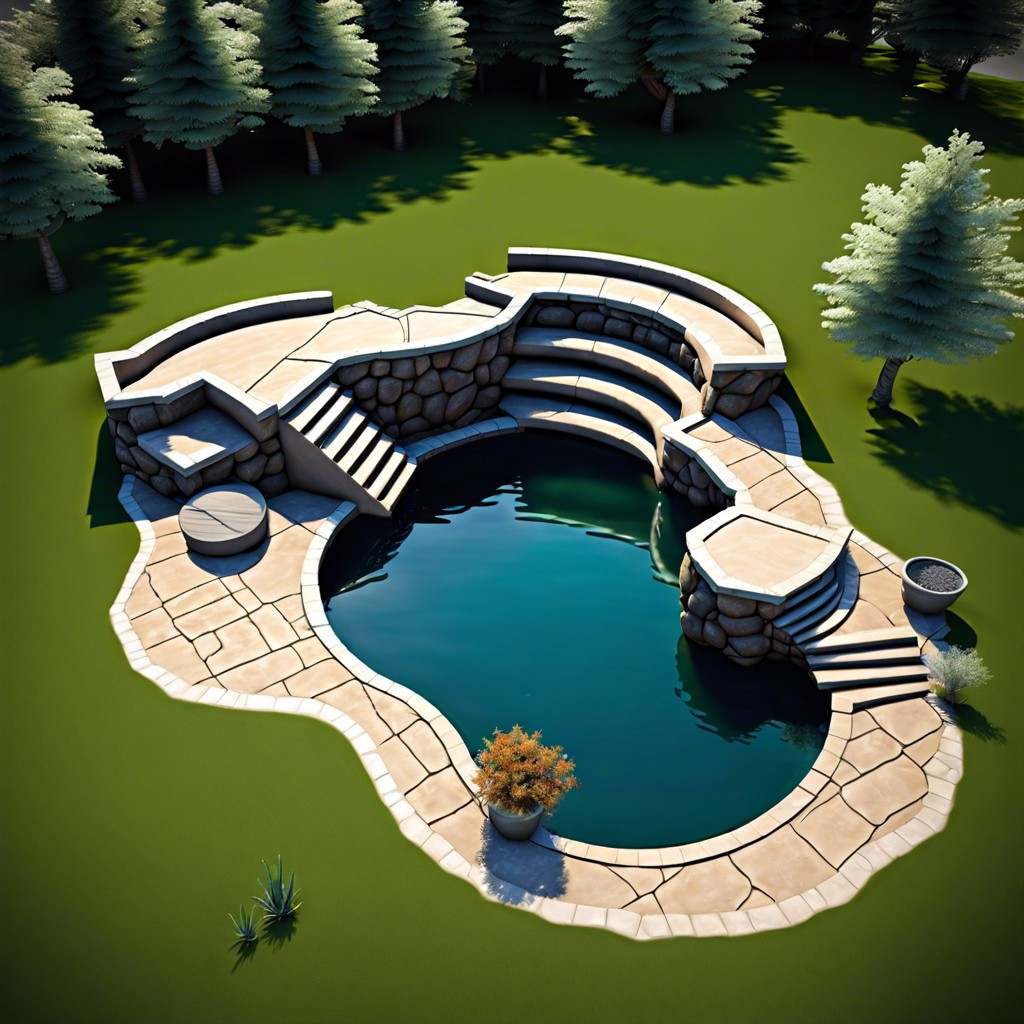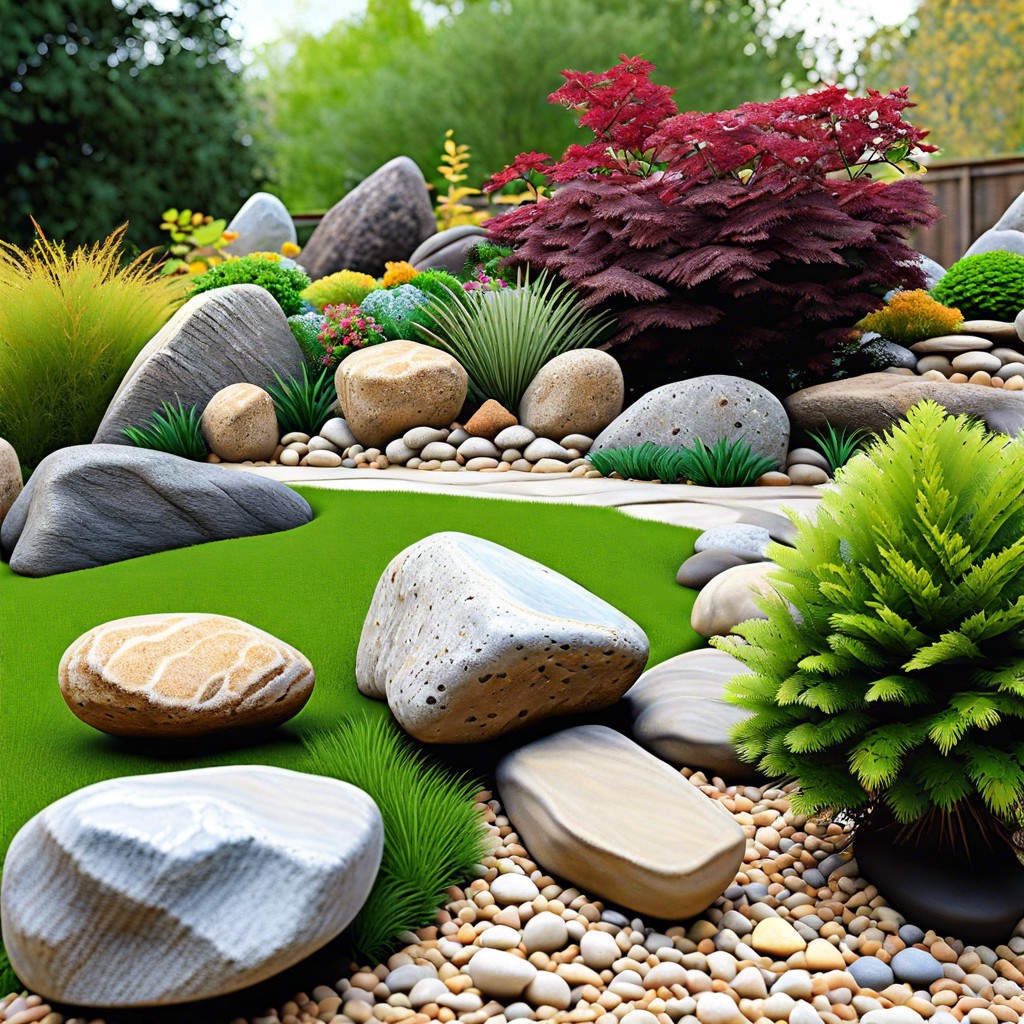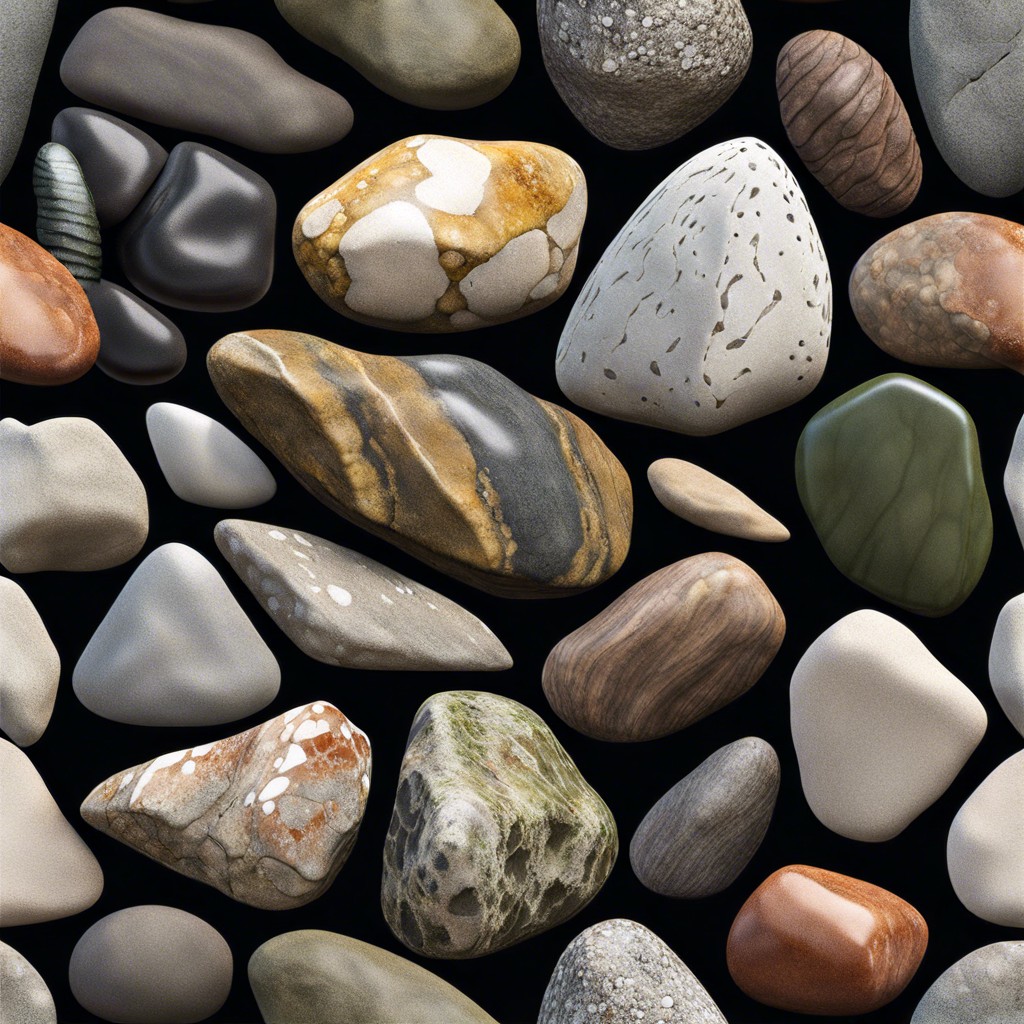In this informative article, we will guide you through the practical and aesthetic benefits of incorporating rocks into your landscaping design, offering tips on how to select, place, and maintain rocks for a stunning and sustainable outdoor space.
Key takeaways:
- Rocks are versatile and practical for landscaping design.
- Different types of rocks serve different purposes in a garden.
- Careful planning and layout are essential for a successful rock landscape.
- Regular maintenance, such as clearing debris and controlling weeds, is necessary.
- Pathways and steps can be enhanced with carefully selected rocks.
What Is a “Rock Landscape”?

Imagine a garden where the usual expanses of grass are replaced with an array of pebbles, boulders, and gravel. This is the essence of a rock landscape. It’s a design choice where rocks of various shapes, sizes, and colors take a central role in the outdoor aesthetic. Not limited to arid regions, rock landscaping is versatile enough for a range of climates and can complement different plant species. It can lend a garden a modern, minimalist look or evoke the rugged charm of a mountainous outcrop. This landscaping style isn’t just about beauty; it’s also practical. Rock gardens are durable, require less water than traditional lawns, and offer a natural solution to soil erosion. In essence, a rock landscape is nature’s own art, sculpted and arranged to create a serene and visually striking outdoor space.
Types of Landscaping Rocks
Selecting the right rocks can set the tone for your entire garden. Here’s a quick glimpse into some common varieties:
- Pea Gravel – Small, smooth, and rounded, this rock type is ideal for filling spaces between stepping stones or water features. Its sizes range from about an eighth of an inch to three-eighths, making it perfect for a soft, natural look.
- River Rock – Larger than pea gravel, river rock has a polished look from years of water flow, bringing a dynamic, flowing feel to your landscape. Generally, they range from the size of a fist to larger, and they’re excellent for creating dry river beds or enhancing drainage.
- Lava Rock – Recognizable for its porous texture and red to black color spectrum, lava rock adds a vibrant twist and is lightweight, which makes it useful for areas that can’t bear too much weight.
- Flagstone – Flat and wide, excellent for creating sturdy walkways and patios, flagstone provides a natural, classic look that withstands the test of time.
- Boulders – Dramatic and bold, boulders can serve as focal points in your garden. They vary greatly in size and shape and are typically used singularly as a statement piece.
Remember, the choice of rock depends not only on the aesthetic appeal but also on functionality. For drainage, smooth stones like pea gravel are preferred, while more angular rocks are better for stable constructions, like retaining walls.
Designing With Rocks: Planning and Layout
When embarking on a rock landscaping project, the secret to success lies in a well-thought-out design. Start by assessing your space. Measure your garden and consider the natural flow of the yard—this will help you decide where your rock features will best complement the existing landscape.
Choose stones that harmonize with your garden’s ambiance. Large, rugged boulders fit seamlessly into a rustic setting, while smooth, rounded pebbles can evoke a more Zen, tranquil vibe. Consider the color variations as well; select hues that either complement or thoughtfully contrast your plant life and other garden elements.
Think about the role rocks will play in your garden. Are they serving a functional purpose, such as building a retaining wall, or are they purely ornamental? Functionality doesn’t exclude charm; for instance, a gravel path not only guides a visitor through your garden but can also add texture and color.
Sketch a rough layout before making any purchases or moving stones. This visual aid allows for better spatial planning and can help prevent buying excess material. Remember, rock placement isn’t permanent, so feel free to rearrange your design as you go, ensuring each stone is purposefully placed to create the desired effect.
Finally, pay attention to scale. A solitary large boulder can become a dramatic focal point, while groupings of smaller stones can lead the eye or provide a home for alpine plants. Balancing rock sizes adds complexity and interest to your landscape.
Maintenance Tips for Rock Landscapes
Keeping your rock landscape in tip-top shape does not require a lot of back-breaking work, but it does need regular attention. First and foremost, ensure that debris such as fallen leaves and twigs are regularly cleared away, as these can detract from the aesthetic appeal and even trap moisture, leading to soil erosion beneath.
Over time, rocks can settle and sink into the soil, especially in areas with heavy rainfall or traffic. Check your landscape periodically and reposition any rocks that have moved out of place. If you notice a recurrent issue in a particular area, consider adding additional gravel underneath to improve drainage and prevent sinking.
Weeds can be the bane of any garden’s existence, and rock landscapes are no exception. To keep them at bay, invest in a high-quality weed barrier fabric before laying your rocks. If some persistent green invaders still poke through, spot treat them with an appropriate weed killer or remove them by hand to prevent spreading.
Algae and moss can create a slippery and unsightly problem on rock surfaces, particularly in shady, moist locations. If you’re not a fan of the natural patina they provide, a gentle scrub with a brush and eco-friendly cleaner can help restore the rocks to their original glory. Just be cautious with pressure washers, as they can erode softer rocks or disturb the arrangement.
Lastly, every once in a while, it’s a good idea to give your rocks a good rinse to wash away accumulated dirt and dust, brightening up the overall look of your landscape. Using a garden hose with a spray attachment will usually suffice; remember to do this on a sunny day to allow for quick drying.
By following these simple maintenance steps, your rock landscape will continue to spark joy and provide a serene and low-maintenance backdrop to your outdoor living space for years to come.
Incorporating Rock Features: Pathways and Steps
Pathways edged or paved with rocks can guide visitors through your garden while adding natural charm. By selecting flat stones such as flagstones, creating a stable and visually appealing walkway becomes a simple task. Arrange them in a manner that complements the contours of your landscape for an organic feel.
Stepping stones are another practical option; they can be spaced evenly to match the stride of a walk. The irregular shapes of river rocks or the rounded edges of pea gravel are especially suitable for these casual routes through your yard.
When it comes to stairs, larger rocks like fieldstone can be employed to craft steps that blend seamlessly with the surrounding environment. Stability is key, so ensure that each step is well-supported and properly leveled to prevent any potential trips or falls.
Lastly, consider the color and texture of your chosen rocks to create contrast or harmony with the surrounding vegetation and elements. Lighter-colored stones might highlight a sunny spot, while darker ones could provide a stunning backdrop to greenery and flowering plants.
